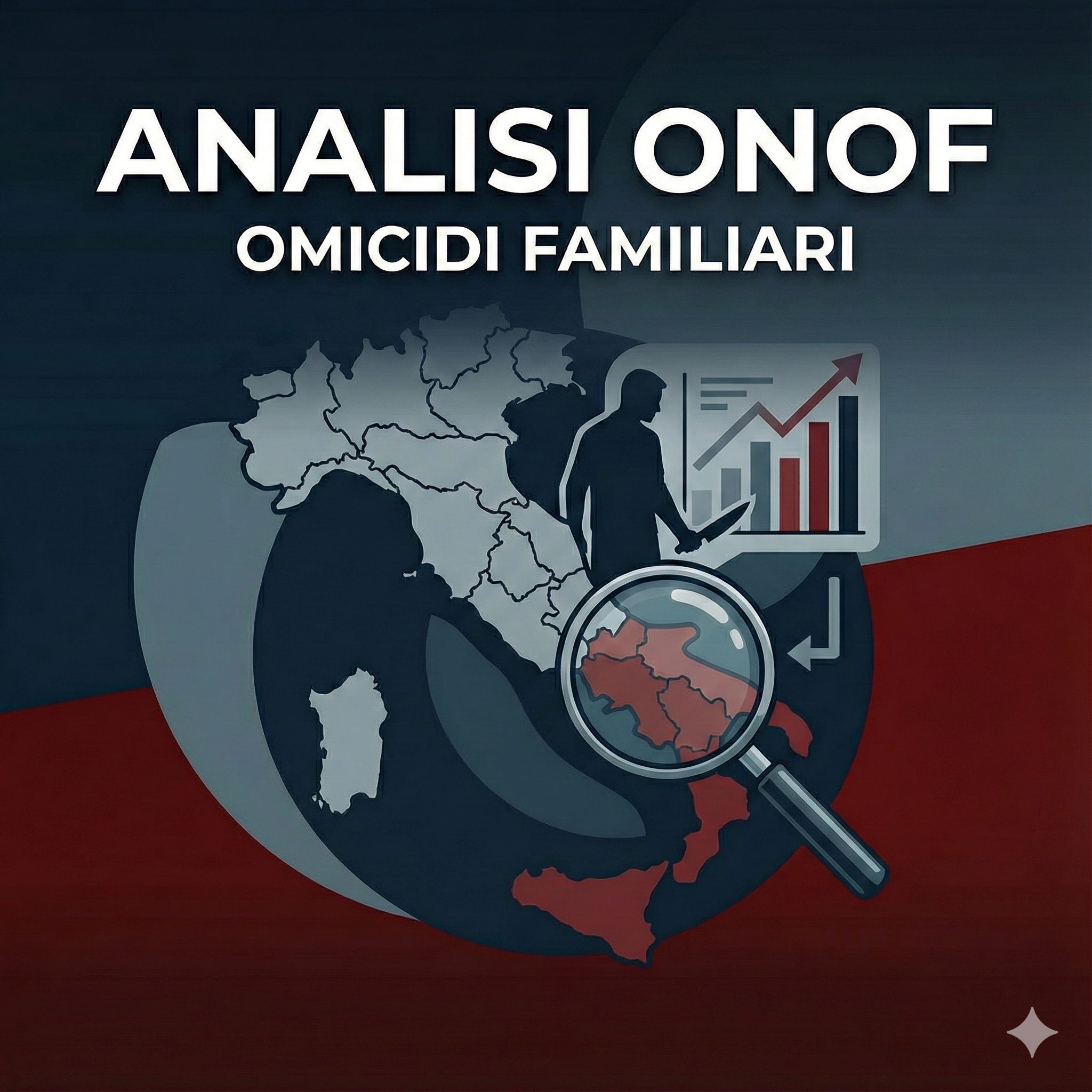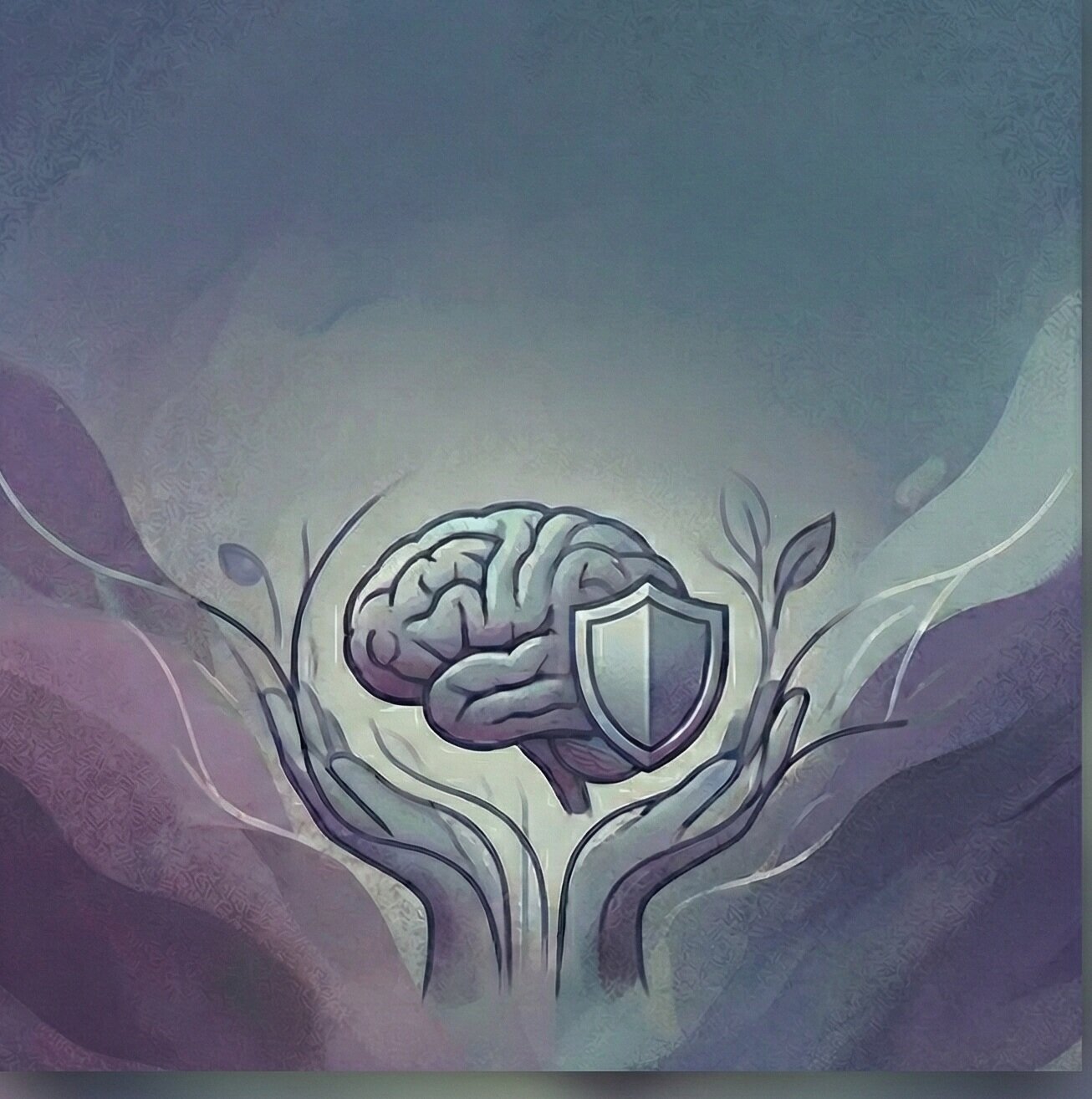ONOF analysis of family homicides (november 13ã19): prevalence of the 18ã35 age group and bladed weapons in the southern sample.
Edited by: Dr. Massimo Lattanzi, Dr. Tiziana Calzone, Dr. Federico Maroli
Organizations: AIPC (Italian Association of Psychology and Criminology), CIPR (Italian Center for Relational Psychotraumatology), ONOF (National Observatory on Family Homicides)
Abstract
This work presents data collected by the National Observatory on Family Homicides (ONOF) for the week of November 13 to 19, 2025, comparing them directly with the survey from the previous week (November 6ã12, 2025). Through open-source intelligence analysis (OSINT) and the application of the A.I.P.C. scientific protocol, an alarming picture emerges: although the gender of the victim and the type of weapon change, the criminological constant is the age of the perpetrators. The 18ã35 age group is confirmed as the prevalent pool of violence, a symptom of worrying emotional dysregulation that transforms conflict into tragedy.
Introduction: methodology, authors, and organizations
Data monitoring and analysis are managed by the multidisciplinary team coordinated by Dr. Massimo Lattanzi and Dr. Tiziana Calzone, with the collaboration of Dr. Federico Maroli.
The study is produced by AIPC, CIPR, and ONOF. Data collection is conducted through OSINT (Open Source Intelligence) methodology: the Observatory does not draw from institutional sources but analyzes cases reported by news outlets. The investigation focuses on "family crimes" (delitti familiari), a category comprising homicides, attempted homicides, suicides, and attempted suicides occurring between individuals linked by a bond of familiarity (relatives, partners, ex-partners, as well as acquaintances and friends).
Profile Analysis: Week of November 13 ã 19, 2025
From the qualitative and quantitative analysis of the data, specific profiles emerge for victims and perpetrators, characterized by a marked "youthfulness" of the violence and a strong impulsive component.
1. the victim Profile: "Young" Vulnerability
The data analysis outlines a victim profile that is predominantly female (60%), falling within the young-adult age range of 18 to 35 years (60%). This figure is significant as it shifts attention from traditionally more fragile targets (the elderly) to young women in the prime of their life planning.
The criminal event occurs most frequently in the geographic context of the South and Islands (60%). The relationship binding the victim to their aggressor is primarily parental (Relatives, 40%), indicating a conflict extending to the wider family network (blood relatives) beyond just the couple. The instrument used for the assault is, in the majority of cases, a bladed weapon (60%).
2. The perpetrator profile: armed impulsivity
Conversely, the alleged perpetrator is described by the data as a man (75%), also belonging to the young adult age bracket of 18 to 35 years (75%).
This demographic variable is critical: it suggests a severe inability to manage frustration and aggressive impulses precisely when social demands become pressing. As with the victims, the violent action is geographically concentrated in the South and Islands (50%) and is directed predominantly toward members of their own family (Relatives, 50%).
The preferred mode of aggression confirms the use of a bladed weapon (75%): the use of a knife is a forensic indicator of physical proximity and often unplanned aggression, consistent with an unregulated emotional reaction seeking the most available offensive object.
Comparative comparison: the escalation of violence (Nov 6ã12 vs. Nov 13ã19)
The comparison with data from the previous week (November 6ã12) highlights significant changes in dynamics, yet confirms a dramatic generational stability.
- Gender Inversion: A radical change in the target is observed. In the week of Nov 6ã12, homicide victims were statistically Men at 100%, while in the following week, the data flips with a prevalence of Women at 60%. This indicates a fluctuation between inter-male violence (fights between acquaintances) and gender-based/intrafamilial violence.
- The Young Constant: The most disturbing data point remains unchanged. In the week of Nov 6ã12, 80% of perpetrators were between 18 and 35 years old; in the week of Nov 13ã19, the percentage remains extremely high at 75%. Serious violence is not the domain of mature individuals but explodes in early adulthood.
- Relational Shift: Violence has narrowed toward the family nucleus. While acquaintances prevailed in the first week (80%), in the second week, 50% of homicides were committed by relatives.
- Escalation of Lethality (Emotional Dysregulation): A worsening of means is recorded. In the week of Nov 6ã12, physical aggression (75%) (beatings/bare hands) prevailed, whereas in the week of Nov 13ã19, there was a shift to bladed weapons (75%).
Conclusions
The week of November 13 to 19, 2025, delivers a ruthless snapshot: family violence does not age; rather, it radicalizes in young adults.
The constant data showing that between 75% and 80% of homicide perpetrators are in the 18ã35 age group suggests a functional deficit in stress management mechanisms. We are not necessarily facing "monsters," but subjects affected by profound emotional dysregulation.
This psychological condition prevents the individual from modulating the intensity of their affective reactions. The impulse bypasses cognitive reflection, transforming momentary anger into brutal physical aggression or, as seen in the last week, into the impulsive use of a knife.
References and useful contacts
If you recognized yourself in these dynamics or feel the need for specialized support to manage relational trauma and regulate your emotions, the professionals at CIPR and AIPC are at your disposal.
Email: aipcitalia@gmail.com Reference Website: www.associazioneitalianadipsicologiaecriminologia.it WhatsApp Phone: 3924401930
AIPC Editore, 2025.



